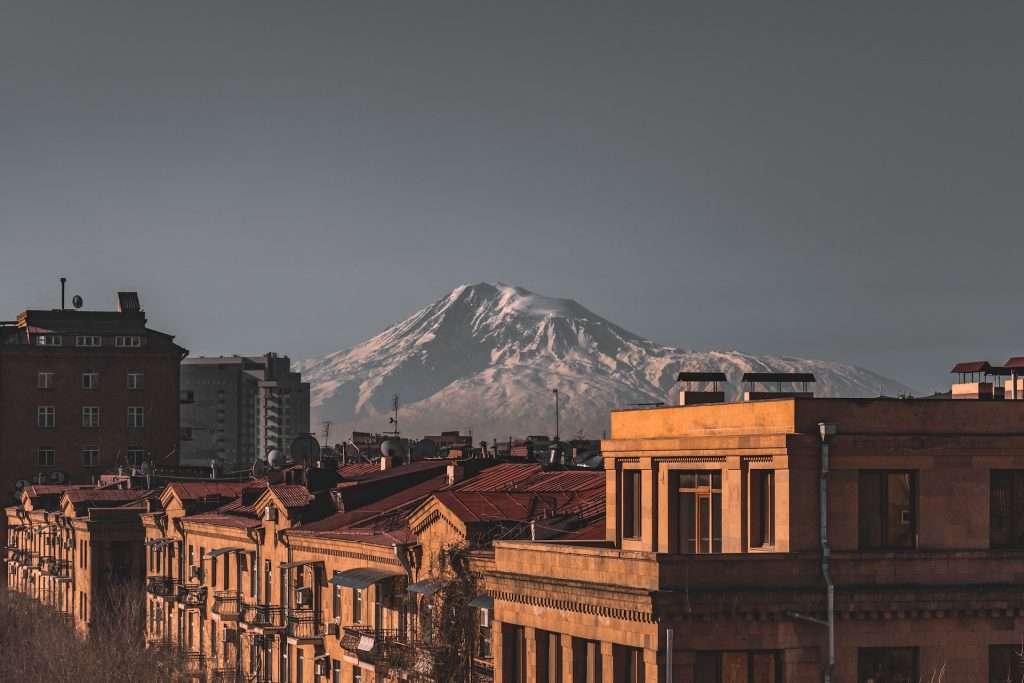4 Countries of Caucasus
The Caucasus region, a realm between Europe and Asia, cradles a blend of cultures, languages, and geopolitics, held together by its distinctive geography. Nestled between the Black Sea and the Caspian Sea, this transcontinental territory comprises four principal nations: Armenia, Azerbaijan, Georgia, and Russia (specifically the Southern part). The core of this article explores these Countries of the Caucasus. It unravels the multifaceted aspects of each nation while addressing the overarching question – how many countries are there in the Caucasus?
Geography: The Mountains That Define
The Caucasus is renowned for its towering mountain ranges, namely the Greater Caucasus and the Lesser Caucasus, which not only sketch the physical but also the political contours of the region. The Greater Caucasus range, defining the northern boundary, is primarily shared by Russia and Georgia, along with the north fringes of Azerbaijan. Conversely, the Lesser Caucasus range in the south cradles Armenia, Azerbaijan, and Georgia, extending its reach to parts of northeastern Turkey, northern Iran, and the self-proclaimed Republic of Artsakh.
The region’s pinnacle, Mount Elbrus, standing at 5,642 meters, is nestled in the Western Caucasus of Russia and reigns as Europe’s highest peak. The dividing watersheds along the Greater Caucasus range have traditionally been perceived as the boundary between Europe and Southwest Asia, though the precise demarcation remains a topic of scholarly debate.
Linguistic and Cultural Tapestry
The Caucasus is often lauded as a cauldron of linguistic diversity. Beyond the Indo-European and Turkic languages, the indigenous Kartvelian, Northwest Caucasian, and Northeast Caucasian language families enrich the region’s linguistic fabric. This linguistic array is mirrored in the cultural plurality, with over 50 distinct peoples inhabiting the region, each bearing unique traditions, religions, and histories. The tumultuous historical narrative of the Caucasus, marked by invasions, rivalries, and cultural exchanges, has left an indelible imprint on the identities of the nations within.
The Four Nations: Unveiling Distinctiveness
The enigmatic realm of the Caucasus is home to four sovereign nations, each showcasing a unique blend of cultures, histories, and socio-political landscapes. These nations, rooted in ancient civilizations and peppered with modern-day dynamism, contribute to the rich tapestry that characterizes the Countries of Caucasus. As we delve into the distinctive features of Armenia, Azerbaijan, Georgia, and Southern Russia, the remarkable diversity and the enduring legacy of historical interplay among these nations come to the fore.
Armenia

Armenia nestles within the rugged terrains of the Lesser Caucasus. A nation with an illustrious past dating back to the Bronze Age, its cultural heritage is etched in ancient monasteries and archaeological wonders. The indelible mark of Christianity, adopted as a state religion as early as AD 301, manifests in a rich pastoral tradition. The Armenian alphabet, a unique script created in the 5th century, further testifies to the country’s historical and intellectual legacy.
Azerbaijan

Azerbaijan lies at the crossroads of the Caucasus, where the Lesser Caucasus meets the Caspian Sea. The nation is a kaleidoscope of ancient fire temples, contemporary architectural marvels, and mud volcanoes. Baku, the capital, epitomizes this blend where the medieval Old City coexists with the modern-day flamboyance of the Flame Towers. Azerbaijan’s rich oil reserves play a pivotal role in its economic tapestry, intertwining the nation’s destiny with the ebb and flow of global energy dynamics.
Georgia

Georgia, straddling the Greater and Lesser Caucasus ranges, is a realm where European and Asian influences meld. Its ancient wine-making tradition, vibrant folklore, and iconic polyphonic music narrate stories of a bygone era while resonating with the modern ethos. The picturesque landscapes, the architectural elegance of Tbilisi, the capital, and the medieval charm of Sighnaghi, the “City of Love”, make Georgia a poetic sojourn.
Russia (Southern Region)

The Southern Region of Russia in the Caucasus, encompassing territories like Dagestan, Chechnya, and North Ossetia–Alania, presents a tableau of ethnic, linguistic, and cultural diversity. The mountainous topography cradles ancient fortresses and timeless villages, while the cosmopolitan vigour breathes through the cities. The rich tapestry of languages and traditions characteristic of this region mirrors the broader spectrum of Russia’s multi-ethnic composition, making it a microcosm of the vast Russian expanse.
Self-Proclaimed Republics: The Layered Geopolitics
The self-proclaimed republics of Artsakh, Abkhazia, and South Ossetia further complexify the geopolitics of the Caucasus. Although a scant few recognize their independence, they underscore the layered political dynamics intrinsic to the Countries of Caucasus.
What Did We Learn Today?
The 4 Countries of the Caucasus, each with its unique identity yet intertwined by geography, history, and a kaleidoscope of cultures and languages, encapsulate a fascinating region where Europe meets Asia. The Caucasus, with its scenic beauty and geopolitical intricacies, continues to be a compelling chapter in the narrative of Eurasia.

